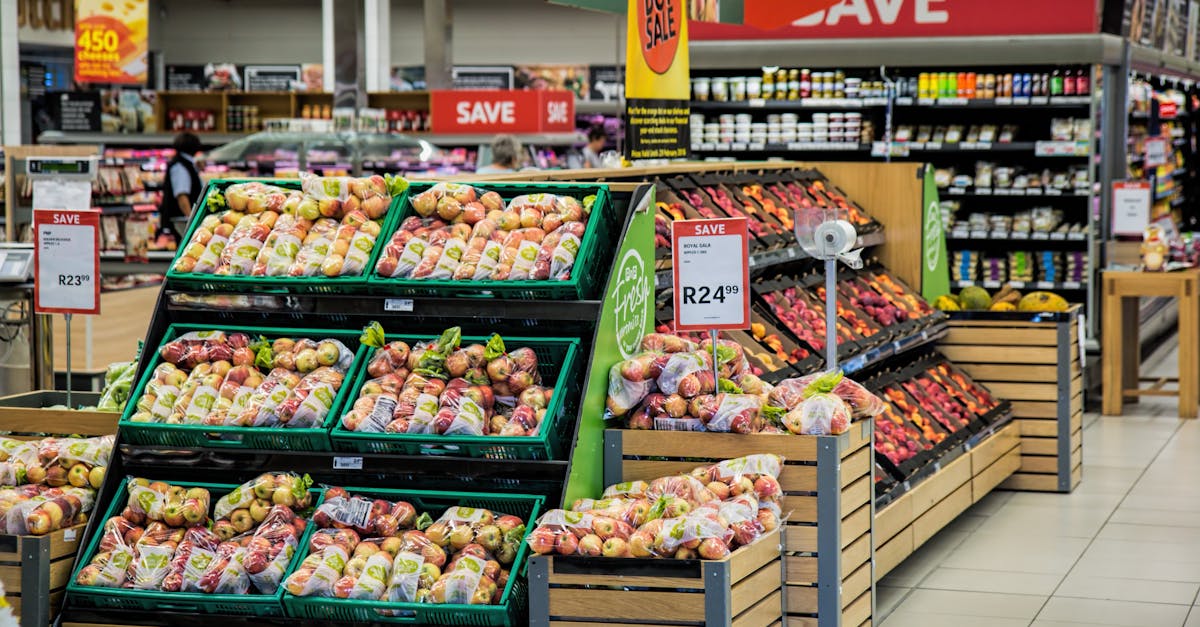
Introduction to Grocery Savings
In the evolving landscape of 2025, saving money on groceries remains a top priority for households. As prices fluctuate due to global economic shifts, finding innovative ways to cut costs becomes essential. Grocery shopping has transformed with technological advancements and new consumer habits. Inflation and climate changes are influencing food availability and pricing models. Coupled with increasing living costs, strategic shopping is now more critical than ever. Let's explore effective methods to save money on groceries in this modern era.
Strategic Planning for Grocery Shopping
Preparation is key when it comes to grocery shopping. Begin by creating a comprehensive shopping list based on meal plans for the week. Prioritize staple items and seasonal produce, which are often cheaper and more nutritious. Investing time in inventory management can prevent overbuying and unwanted waste. Utilize mobile apps that offer reminders or organize shopping lists to ensure you only buy what you need. Don't shy away from bulk purchasing on non-perishable goods when discounts align with your needs.

Kampus Production/Pexels
Exploring Loyalty Programs and Memberships
Store loyalty programs and memberships can be a boon for grocery shoppers in 2025. Major grocery chains offer exclusive discounts and promotions for registered members. Take advantage of points systems that allow accumulation for future savings. Some programs offer digital coupons straight to your app, simplifying the saving process. Consider cash-back credit cards designed for grocery expenditures, ensuring benefits while spending responsibly. Evaluate which programs offer the most value for your specific shopping habits.
Harnessing Technology and Apps
Technology continues to revolutionize grocery shopping. Smart apps now offer personalized discounts based on shopping patterns and preferences. Utilize price comparison apps to ensure you're getting the best deals in the area. Voice-activated grocery list apps can simplify the task, as can e-receipt systems that help track spending over time. Grocery delivery services, while initially more expensive, can reduce impulse buys, saving money long-term. Digital platforms make coupon clipping easier, so always look for the latest deals online.
Exploring Farmer's Markets and Local Options
In 2025, many consumers are turning to farmer's markets and local produce sellers. These venues often provide fresher and more cost-effective alternatives to supermarket offers. The direct purchase usually unfurls seasonal discounts and helps reduce food miles, contributing to sustainability. Make it a habit to visit during closing hours, when vendors often mark down prices to sell their stock. Building relationships with local farmers can sometimes lead to personalized deals or bulk purchasing options. Local shopping supports community economies while potentially saving money.
Adapting to Climate-Conscious Choices
Environmental awareness is reshaping grocery shopping habits. Opting for plant-based foods and locally sourced products can often prove more economical. These choices reduce dependency on high-cost imports that fluctuate with global events. Sustainable packaging options might incur initial costs but lead to long-term savings by reducing waste. Gardening has also surged in popularity, providing a fresh source of vegetables that cut grocery bills. Adaptability in shopping not only conserves cash but also answers ecological and societal calls.
Understanding Inflation and Seasonal Adjustments
In 2025, inflation continues to drive price fluctuations in the grocery sector. Understanding these patterns is vital for budget-friendly shopping. Monitor economic trends and plan accordingly, such as stocking up on items before known price hikes. Take note that consuming seasonal produce can remain a consistent money-saver. Off-season purchases might seem tempting but usually result in added costs. By adjusting habits and expectations with inflation in mind, consumers can better mitigate its impact on their wallets.
Repurposing and Reducing Waste
With environmental consciousness on the rise, repurposing food and reducing waste is an effective strategy. Commit to minimizing waste by using leftover ingredients in creative recipes. For example, stale bread can become croutons or breadcrumbs. Use vegetable scraps to make homemade stock, enhancing meals without extra cost. Freezing excess food before it spoils can extend its life and utility. A dedication to reducing waste can cut expenses significantly over time and contribute to a zero-waste lifestyle.
Exploring Plant-Based Alternatives
Plant-based diets are increasingly popular, offering cost benefits and health perks. These alternatives often lead to lower grocery bills compared to meat-heavy diets. Opt for beans, lentils, and grains as staple sources of protein, which have become cost-efficient powerhouses. Plant-based products experience fewer price hikes and reductions in production costs over time. Embrace creative cooking techniques to make plant-based meals vibrant and satisfying. Reduction in meat consumption has dual benefits: a decrease in grocery expenses and a lighter environmental footprint.
Concluding Thoughts
In a world where economic variables are constantly shifting, finding ways to save money on groceries in 2025 is both a challenge and an opportunity. By adopting smart shopping habits, leveraging technology, and adjusting to new dietary trends, consumers can navigate these changes successfully. The implementation of eco-conscious choices and reduced waste practices further increases savings. Ensuring financial and environmental stability begins with informed decisions in everyday grocery shopping. As the future unfolds, these tips will remain valuable tools for savvy consumers aiming to balance cost with quality and sustainability.